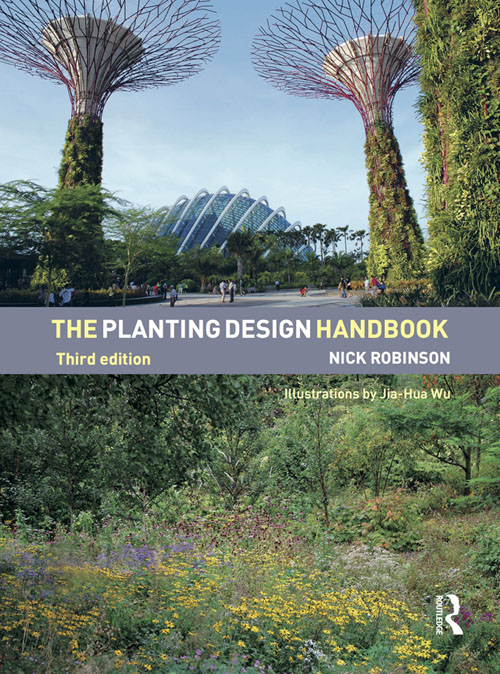 the planting design handbook
the planting design handbook
This second and third editions are fully revised and updated, taking account of developments in professional practice and reflecting a variety of media and approaches currently used. It incorporates conceptual design approaches to planting, a range of design methods as well as tried and tested analytical and objective procedures, and a wide range of new international examples of planting design. The ecological basis for planting design has been broadened to include examples from warm temperate and subtropical vegetation types as well as those of the cool temperate and Mediterranean climate area.
Contents:
Part I: Principles: Why design?; Plants as a medium for design; Spatial characteristics of plants; Creating spaces with plants; Composite landscape; Visual properties of plants; Principles of visual composition; Plant assemblages. Part II: Process: A method for planting design. Part III: Practice: Structure planting; Ornamental planting; Conclusion; References and further reading; Index.
Reviews:
- 'One of the real strengths of this excellent text is its comparative approach. Nick Robinson displays his extensive knowledge and enthusiasm for planting design with numerous examples from the UK and New Zealand, and from many other climatic and cultural settings. The evocative graphics highlight the critical relationship between the spatial and visual qualities of plants and their ecological characteristics. The Planting Design Handbook deserves a place on the desk of every landscape educator, student and practitioner. It will be permenantly open, well thumbed, and highly valued as an inspirational source for creative planting design.' â¨Professor Simon Swaffield, Lincoln University, New Zealand
- 'This refresher is exactly what landscape architects need…For students, it is an invaluable primer for measuring themselves up to the potential for design with plants…This is a comprehensive book that will be used to inform the use of plants by landscape architects all over the world.' Landscape Review
- '…a…gem…a no-nonsense approach to true planting design technique.' The Times
- '…this book is a pleasing and attractive read, aimed at a wide audience of planting and environmental designers…The author's prose is elegant…This second edition includes many practical examples of plantings, drawn from both Europe and New Zealand, which considerably enhance the book's appeal and application.' Landscape Review
Reviews of first edition:
- 'Robinson's strategy is excellent in that it makes plants integral to the working out of a design. Any garden designer could profit from reading this book. For the student ... struggling to come to terms with the various stages of the design process ... it will be a substantial and time-saving asset.' VITIS (Journal of the Society of Designers)
- '... thought provoking and at times fascinating ... invaluable for those who need to learn more about how design decisions are reached. The other highlight is the elegant clarity of the sketch illustrations' Arboricultural Journal
- ‘271 pages packed with numerous black and white photographs, plans and sketches and text in easy to read style of language.’ Leisure Manager
The Planting Design Handbook can be ordered online at Routledge Taylor and Francis or Amazon.co.uk
This title is also available as an eBook, ISBN 978-0-7546-8000-0

